 KEY TAKEAWAY
KEY TAKEAWAYThese are the top 5 alternatives to Supermetrics:
- Hevo: A no-code ETL platform offering 150+ data connectors, real-time sync, and pre-load transformations for seamless data integration.
- Improvado: Centralizes marketing data from all platforms and sends it directly to BI tools with automation and customization options.
- Coefficient: Connects 60+ data sources to Google Sheets and Excel for real-time spreadsheet-based reporting and analysis.
- Stitch: Simplifies ETL by extracting and loading data from various sources into a warehouse quickly, without custom APIs.
- Xplenty – Low-code ETL platform with drag-and-drop interface for real-time data integration and transformation.
The Supermetrics platform is an API to bring marketing data from a variety of sources into a single location for reporting and analysis.
However, if you want to perform more complex operations that exceed 20 requests per second, you might need to look for other options. So, when looking for a solution, you need to consider the features and qualifications of each potential vendor that best suits your business needs.
This article will help you choose between the top 9 Supermetrics Alternatives that you can choose. We have made a list of alternatives based on multiple factors like ease of use, pricing, scalability, etc. to help you choose the best option.
Table of Contents
Why Users Are Looking for Supermetrics Alternatives?
Supermetrics is a robust tool for pulling marketing data into platforms like Google Sheets and Looker Studio. However, users of the platform still face numerous challenges and limitations.
Here are the key reasons why users are looking for Supermetrics alternatives:
High and complex pricing
Supermetrics pricing is one of the biggest areas of concern among numerous users, especially for small businesses or freelancers.
Although the Starter plan begins at $29/month, it supports only three data sources. Beyond the cost, many users often find the per-destination pricing model restrictive as it requires separate subscriptions for Google Sheets and Looker Studio.

Poor customer service and support
Although customer support should be a priority for a platform like Supermetrics, many users frequently report slow and unhelpful customer support.
The reviews on platforms, like G2, point out issues, such as slow response times that may take weeks. This can leave users stranded during critical reporting tasks.

If you are a business that needs priority support, looking for a Supermetrics alternative that offers timely customer support makes perfect sense.
Slow updates to connectors
Things change faster in the field of marketing. As such, connectors that help businesses pull data from marketing platforms like must also be updated faster to reflect the changes they undergo.
However, Supermetrics is slow to such updates, leaving users without the additional data these updates might bring to them.

For businesses that work in a competitive environment, this could be a serious issue that may affect their decision-making capability.
Limited data connectors beyond popular sources
Supermetrics supports around 100 connectors. This is far fewer than competitors like Hevo Data, which offers 150+ connectors.
As a result, it often struggles with non-marketing data sources like CRMs or ERPs and large datasets, slowing down significantly. This also limits the users from extracting data from custom sources.
As such, if you are a business with custom data sources, then it makes sense for you to look for Supermetrics alternatives that offer reliable custom connectors.
Supermetrics is geared toward small businesses, particularly well-suited for marketers who have not yet advanced beyond Facebook, Google Ads, and Google Analytics.
Here are a few things you need to look for in the Supermetrics competitors:
- Supermetrics enforces a per-second rate limit. If you run more than 20 requests per second, then an error will be returned. You need to consider a platform that does not have a rate limit.
- Another limitation is that your queries will be placed in a queue that will be emptied a few queries at a time. In addition, if you perform duplicate identical queries, only the first one will be performed.
- The data source API is also limited on how fast and how much data can be retrieved.
- The pricing model of Supermetrics might be expensive for some companies.
What are the Top 10 Supermetrics Alternatives?
Here are the best Supermetrics alternatives:
1. Hevo
Hevo Data is a No-Code Data Pipeline Platform that allows you to replicate data in near real-time from 150+ Data Sources to the destination of your choice, including Snowflake, BigQuery, Redshift, Databricks, and Firebolt, without writing a single line of code.
You can focus on important things and opportunities while Hevo takes care of your data management.
Key Features
- Pre-Load Transformations: It facilitates pre-load data transformations using Python or an easy-to-use drag-and-drop interface.
- Fault-Tolerant Architecture: Your data is safe even when a pipeline fails. Hevo keeps it in the staging area and notifies you about it.
- Auto Mapping: This is one of Hevo’s most important features. Hevo’s schema detection engine automatically detects the schema of the incoming data and creates a compatible schema in the destination.
- 24*7 Live Support: Hevo provides 24*7 live chat support to its customers to ensure that seamless data management.
Take a look at Hevo’s interactive dashboard.
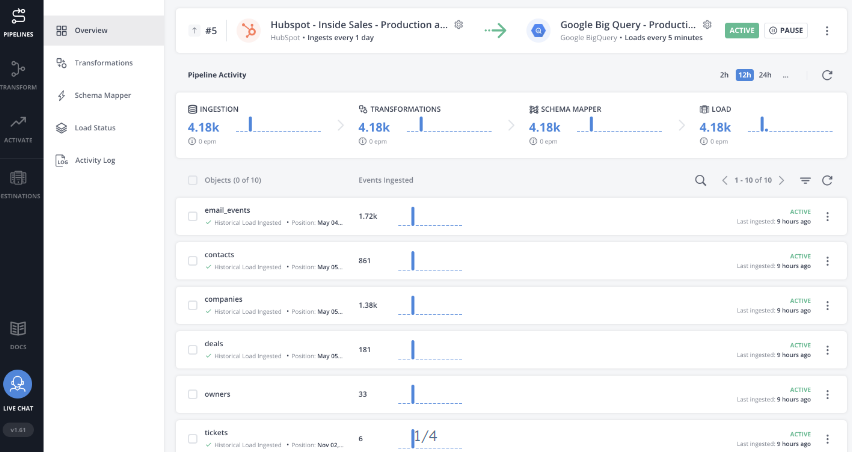
Capterra Rating: 4.7
G2 Rating: 4.3
Pricing Model
Hevo provides transparent pricing that ensures no billing surprises even as you scale. It provides four pricing plans, which are:
- Free: For moving minimal amounts of data from SaaS tools. Provides up to 1M events/month.
- Standard: $239/Month – For moving limited amounts of data from SaaS tools and databases.
- Professional: $679/Month – For considerable data needs and higher control over data ingestion.
- Business Critical: You can customize it according to your requirements. For advanced data requirements like real-time data ingestion
You can learn more about our Pricing plans. If you are looking for a supermetrics free alternative, then you can opt for Hevo’s free plan.
Pros
- It is a zero-maintenance platform.
- It supports Change Data Capture.
- You can also load your Historical Data using Hevo.
Hevo is a powerful ETL (Extract, Transform, Load) tool that serves as a smart alternative to Supermetrics, particularly for those seeking a more robust data integration and transformation solution.
Here’s a quick overview of Hevo’s key features and benefits:
- Comprehensive Data Integration: Connects to a wide range of data sources including databases, cloud applications, and various APIs.
- Real-Time Data Processing: Provides real-time data integration and synchronization, ensuring that insights are based on the most current information.
- Advanced Data Transformation: Offers extensive capabilities for transforming and enriching data, including custom transformations and pre-built functions.
- User-Friendly Interface: Designed with an intuitive interface that simplifies complex ETL processes, making it accessible for both technical and non-technical users.
Join our 2000+ happy customers and streamline your data management with Hevo.
Get Started with Hevo for Free2. Improvado
Improvado collects all your marketing data in one place. It integrates with every marketing platform you use and gathers the data pipelines into the Improvado platform or sends it directly to the BI tools you use without needing help from the development team.
Key Features
Let us discuss some of the key features of Improvado.
- API Access: It provides API access for advanced data integration and manipulation.
- Data Enrichment: It allows data to be enriched either by adding new sources or just enhancing the existing data with the help of information received from external sources.
- Dedicated Customer Success Manager: Improvado often assigns a dedicated Customer Success Manager, who helps set up and optimize the software and provides continuous support.
Take a look at Improvado’s dashboard:
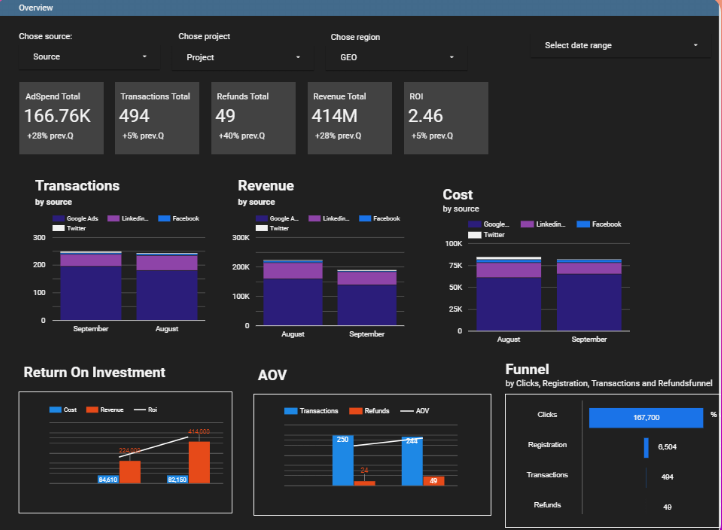
Capterra Rating: 4.5
G2 Rating: 4.5
Pricing Model
They have three pricing models, which are:
- Growth
- Advanced
- Enterprise
For more information, you can visit Improvado’s pricing page.
Pros
- It provides highly customizable dashboards and reports for better insight.
- It also has automation capabilities for scheduling updates and reports.
Cons
- It can be a little expensive as compared to other options, especially for smaller businesses.
- Advanced features and customization options can be overwhelming to a lot of end-users with simple requirements.
3. Coefficient
Coefficient is a no-code data connector for Google Sheets and Excel. They support 60+ data sources across Marketing, Sales, Finance, BI, Databases and more. Coefficient is a preferred option if you want to blend data between multiple data sources seamlessly on your spreadsheets.
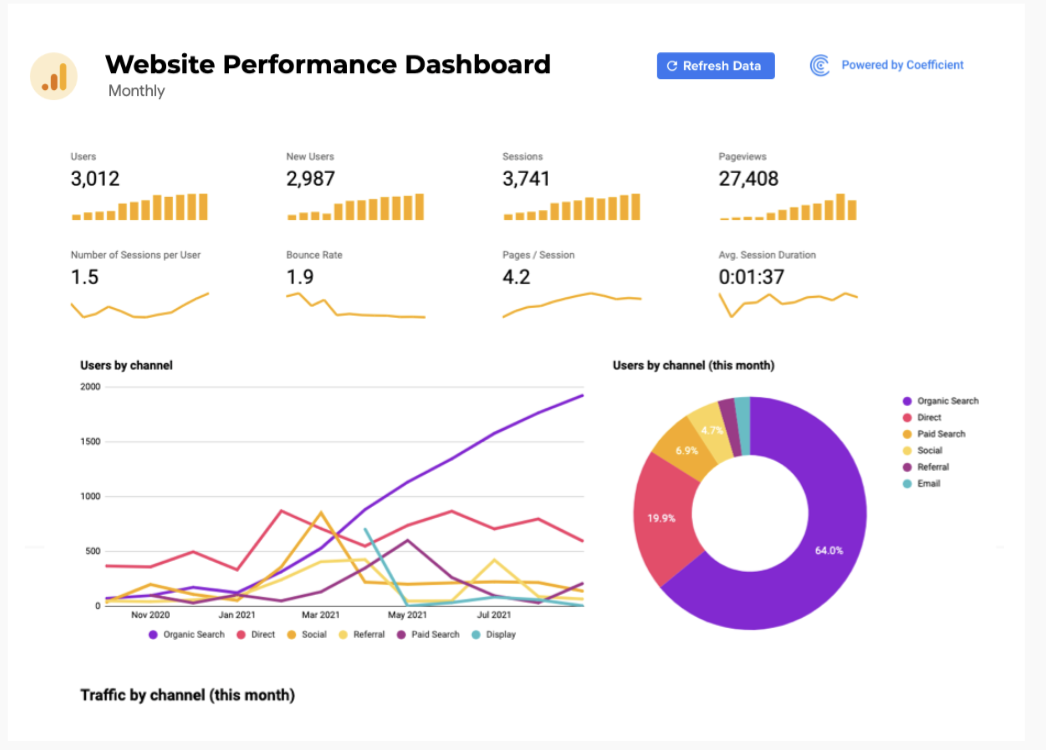
Key Features
Here are some highlights of Coefficient data connector –
- GPT Copilot: Equips your Google Sheets with advanced AI features like AI Pivots, Formula Builder, Chart builder and more.
- Custom API: If you can’t find a pre-built connector to your data source, you can still connect to it using their custom API setup.
- Data Updates & Refreshes: Coefficient enables real-time data synchronization and allows auto-refreshes based on your import setup. It also allows slack and email alerts making tracking much easier.
Take a look at Coefficient’s dashboard:
Pricing Model
They have three pricing models, which are:
- Free Plan – Access core features with usage limits. Ideal to test the product.
- Starter Plan – Supports all features except certain admin privileges. Ideal if use cases are limited and only used by one or two people.
- Pro Plan – Covers all features. Ideal for business users who need real-time data updates and run advanced reporting on spreadsheets pulling data everyday.
- Enterprise – Custom plans for user licenses, data sources and unlimited feature usage with dedicated support and admin setup. Ideal for big businesses.
You can find more information about pricing on their website.
Pros
- You are still operating out of spreadsheets which gives you the flexibility and functions you are comfortable with.
- Coefficient provides a gallery of ready-to-use dashboard templates for reporting. You can also create & save templates on your own.
- Incredibly helpful support team who is ready to provide you with solutions promptly.
Cons
It only allows importing data into spreadsheets and not directly into other platforms like BI tools. You can still export data from spreadsheets back into other platforms.
Some advanced features can be overwhelming to some users with simple use cases.
3. Stitch
Stitch is an ETL tool that removes the necessity of creating APIs. Instead, users of Stitch can focus their attention on extraction and loading, which makes data collection and integration incredibly simple.
Although Stitch does not include several preload transformations, it does make it possible to establish quick connections between SaaS tools and data sources.
Key Features
- Focus on Data Integration: It specializes in ETL processes, moving data from various sources into a central data warehouse or database.
- Pre-built Connectors: It offers numerous pre-built connectors to various source locations—marketing platforms, databases, and cloud services.
- Data Frequency Sync: It provides flexible data synchronization frequencies, including real-time and scheduled updates.
Have a look at Stitch’s dashboard.
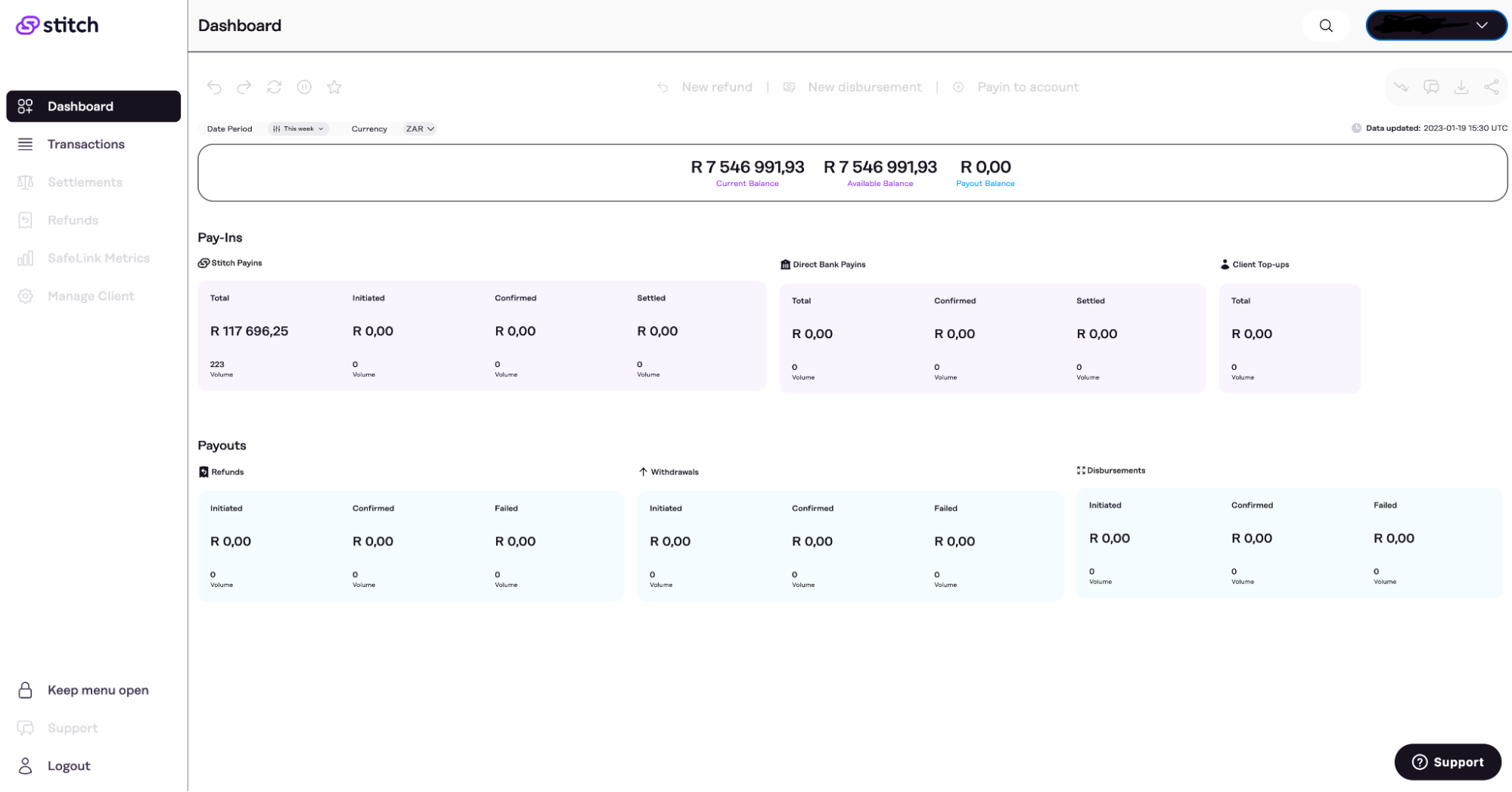
Capterra Rating : 4.3
G2 Rating: 4.4
Pricing Model
Stitch’s pricing model typically includes:
- Free Tier: Basic access with limited features and data volume, suitable for small projects or trials.
- Paid Plans: Pricing scales with the volume of data and number of sources. Generally involves:
- Basic Plan: Entry-level with a set number of data sources and integrations.
- Standard Plan: Increased data volume and more advanced features.
- Enterprise Plan: Custom pricing for larger organizations with advanced needs and additional support.
Pros
- Easy set-up process with pre-built connectors to a wide variety of data sources.
- This process automatically updates data in the destination system, reducing manual intervention.
Cons
- It is focused on data integration and not on reporting or visualization. There are no built-in features for reporting or dashboards in this particular tool.
- Pricing can be complex and possibly expensive, with more volume and data sources.
4. Xplenty
Xplenty is a low-code data integration platform and cloud-based ETL solution that features a user-friendly drag-and-drop interface. Its transformation tools enable the seamless normalization and transformation of sensitive data while ensuring compliance.
Key Features
Let us discuss some of the key features of Xplenty.
- Visual ETL Interface: It provides an intuitive, user-friendly, drag-and-drop interface for building and managing data pipelines without extensive coding.
- Wide Range of Connectors: It supports a variety of pre-built connectors for various data sources, including marketing platforms, databases, and cloud applications.
- Custom Transformations: This enables authors to execute ad-hoc data transformations by applying various tools and functions to prepare the data for analysis.
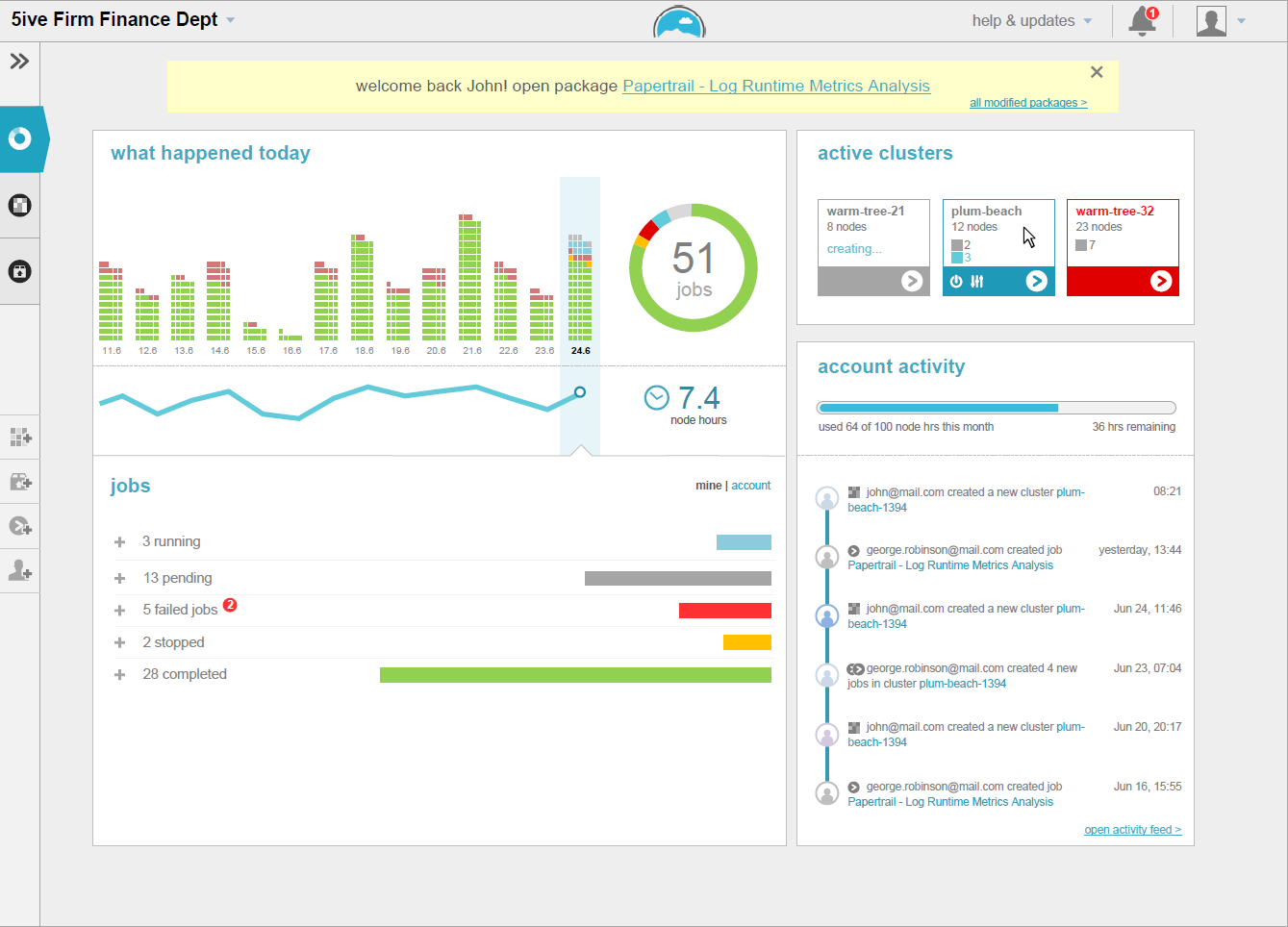
Capterra Rating: 4.6
G2 Rating: 4.3
Pricing Model
For information about their pricing, you can visit Xplenty pricing page.
Pros
- It supports BI tools and data warehouses, which can extend your company’s data analyses and reporting capabilities.
- It enables real-time data processing and integration to provide up-to-date data for timely decision-making.
Cons
- Even with a user-friendly interface, there can be a learning curve associated with beginners in the ETL process.
- It has very limited in-built visualization and reporting features as the main focus is on integrations and transformations.
5. Fivetran
Fivetran is a managed data pipeline platform. In general, Fivetran standardizes the process to replicate schemas from the source of your choice to a destination like Redshift, BigQuery, and many more. Fivetran uses the ELT approach to load data into a data warehouse, which means loading happens before the transformation process.
Key Features
- Automated Data Integration: It provides out-of-the-box connectivity to various source systems and automates the ETL processes.
- Real-Time Data Sync: It facilitates near real-time replication of data for continuous data updation in other systems.
Have a look at Fivetran’s dashboard.
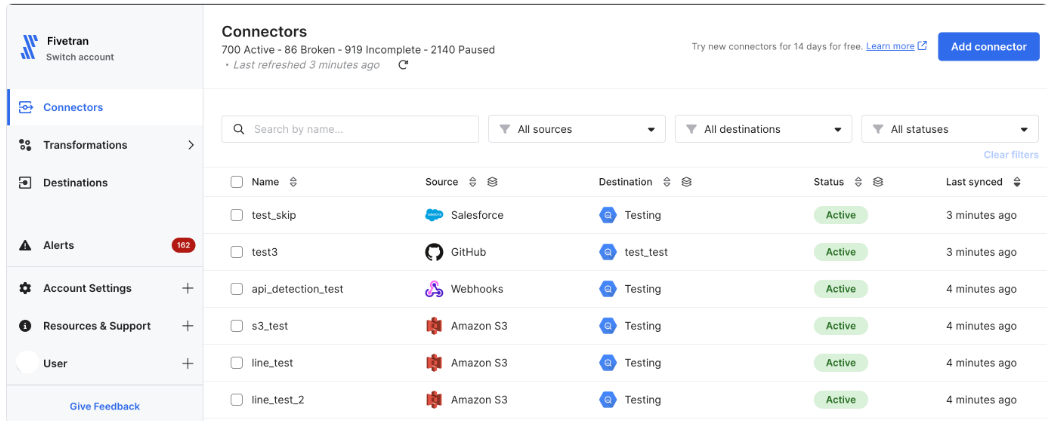
Capterra Rating: 4.7
G2 Rating: 4.2
Pricing Model
You can start for free. They have 4 main pricing plans that are:
- Free
- Starter
- Standard
- Enterprise
To know more about their pricing, you can visit their pricing page.
Pros
- You can easily set up with little manual configuration required to connect and sync data sources.
- It supports a huge number of pre-built connectors for various databases, applications, and cloud services.
- Easily scales to handle growing data volumes and additional data sources.
Cons
- It can become expensive, particularly for large volumes of data or many connectors.
- It is not that flexible for highly customized data transformations or integrations.
For a more detailed overview, you can check out our blog on Fivetran vs Supermetrics.
6. Adverity
Adverity is a data integration and analytics platform that competes with Supermetrics, offering advanced features for data management and reporting. Adverity is designed for marketers and marketing agencies that wish to connect and collaborate with their marketing, e-commerce, and media platforms, all from a single centralized location.
Key Features
- Advanced Data Analytics: It offers next-generation analytics, including predictive insights from machine learning models and data enrichment.
- Data Source API: It provides API access to integrations for further handling of data at a higher level.
- Data quality monitoring: It provides tools to monitor the quality of the data and the accuracy, consistency, and completeness of the reports.
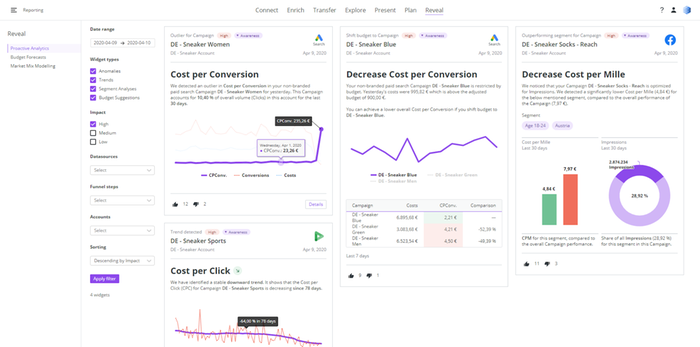
Capterra Rating: 4.5
G2 Rating: 4.5
Pricing Model
You can read more about Adverity’s pricing plans.
Pros
- It is designed to scale with growing data volumes and increasing complexity, making it suitable for both small businesses and large enterprises.
- It has rich functionalities to aggregate data from a wide variety of sources, such as marketing systems, sales systems, and financial systems.
Cons
- Initial implementation and integration with existing systems can be lengthy and resource-intensive.
- If you have straightforward data needs or simpler reporting requirements, Adverity’s extensive features may be more than necessary, leading to unnecessary complexity for you.
7. Windsor.ai

Windsor.ai can measure return on investment (ROI) for a variety of marketing channels, campaigns, keywords, and creative analysis by connecting marketing data with their platform.
Windsor.ai is one of those alternatives to Supermetrics that is great for businesses that have a user journey that consists of many different touchpoints across a variety of different systems.
Key Features
Let us dive deep into some of the key features of Windsor.ai.
- Automated Attribution Modelling: It provides automated attribution models that help in understanding the influence of various marketing channels on conversions and ROI.
- Cross-Channel Data Integration: Integrates all marketing channels into a single view of marketing performance, from social media and search engines to email platforms.
- AI-Powered Analytics: This tool leverages AI and machine learning to develop expertise in advanced data analytics, predictive insights, and trend forecasting.
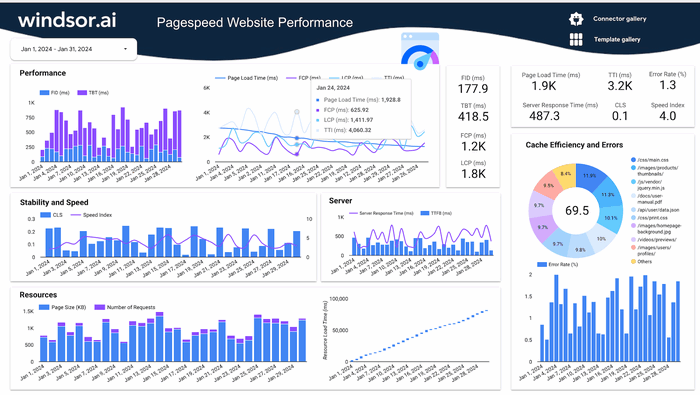
Capterra Rating: 4.4
G2 Rating: 4.6
Pricing Model
It provides 6 pricing plans, which are:
- Free
- Basic
- Standard
- Plus
- Professional
- Enterprise
For more details on the exact amount payable, you can visit Windsor.ai’s pricing page.
Pros
- It offers easy integrations with major advertising platforms as well.
- It can deliver real-time updates and insights.
Cons
- Windsor.ai’s user interface is a bit bland and the user experience is not so friendly.
- There can be issues regarding data privacy and security with its extensive integration and enrichment.
8. Funnel.io
Funnel.io is a data integration and marketing analytics platform that serves as an alternative to Supermetrics. It focuses on simplifying data collection and reporting across various marketing channels.
Key Features
- Customizable Data Models: It allows users to create different models of data and related mappings that answer specific reporting needs and business requirements.
- Automated Data Collection: It automates the extraction of data from a variety of marketing platforms and consolidates them, eliminating time-consuming manual entry and possible errors.
- Real-Time Data Sync: It provides real-time data synchronization and updates, ensuring that dashboards and reports reflect the latest information.

Capterra Rating: 4.7
G2 Rating: 4.5
Pricing Model
It has three pricing plans that are:
- Starter
- Business
- Enterprise
To learn more about Funnel.io’s pricing plan.
Pros
- Includes advanced tools for transforming data, such as custom formulas and data enrichment, which ultimately improves the quality of your data.
- Funnel.io automatically harmonizes data after extracting it from various sources.
Cons
- The custom pricing model can lead to difficulty in budgeting and cost predictability.
- The setup process can be complex and time-consuming.
9. HubSpot Marketing Hub

HubSpot Marketing Hub is a comprehensive marketing software platform that offers tools for marketing automation, CRM, and analytics.
Key Features
Let us dive deep into the key features of HubSpot.
- Integrated CRM: You can combine marketing tools with built-in CRM to get a single view of customer interactions and marketing performance.
- Landing Page and Form Builders: It offers intuitive tools to create and optimize landing pages and forms, better lead capture, and conversion rates.
- A/B Testing: It helps in A/B testing of e-mails, landing pages, and other marketing materials to get optimal performance, based on data-driven insights.
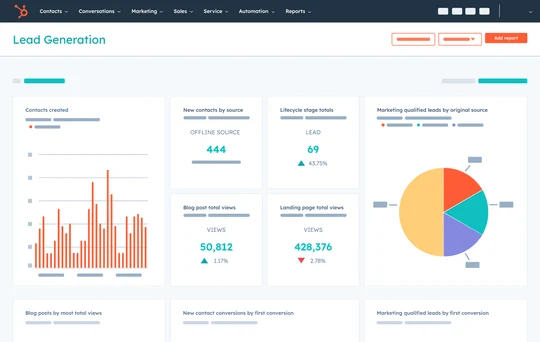
Capterra Rating: 4.7
G2 Rating: 4.4
Pricing Model
It offers two main pricing plans that are:
- Marketing Hub Professional
- Marketing Hub Enterprise
To know more about the features of these plans, you can visit the HubSpot page.
Pros
- This is a social media management desktop tool that helps users monitor their audience and engage with them without having to leave the platform.
- It has an intuitive and user-friendly interface.
Cons
- Some features and reports can only be adjusted to a limited extent compared to more focused analytics tools.
- The tiered pricing model can become expensive.
Comparison Table of the Top 5 Supermetrics Alternatives
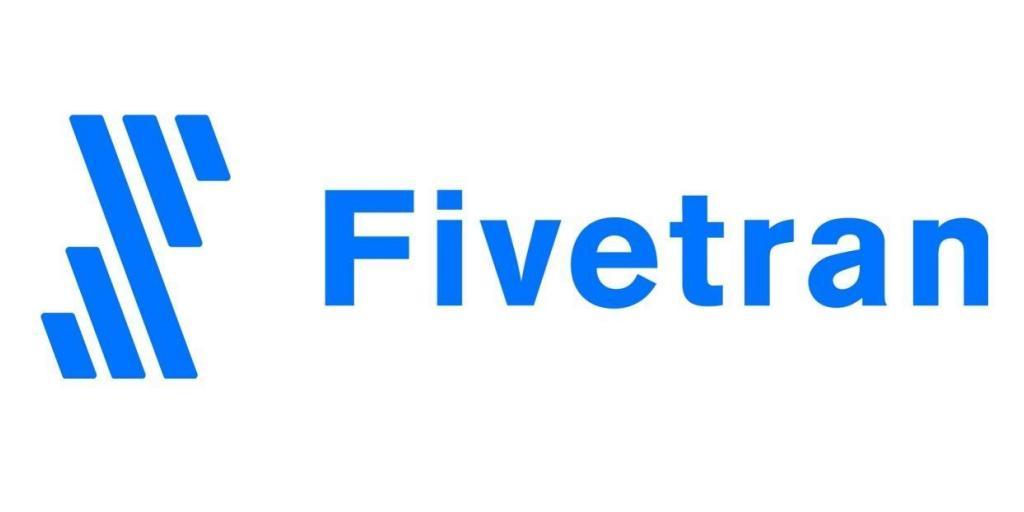 | ||||||
| Reviews |  4.5 (250+ reviews) |  4.4 (80+ reviews) |  4.7 (130+ reviews) |  4.8 (70+ reviews) |  4.7 (200+ reviews) |  4.2 (400+ reviews) |
| Pricing | Usage-based pricing | Volume-based pricing | Usage‑based pricing | Row based pricing | Fixed-fee pricing model | MAR-based pricing |
| Free Plan |  |  |  | |||
| Free Trial |  14-day free trial |  |  |  14 days free trial |  14 days free trial |  14-day free trial |
| No-Code Platform |  |  |  |  | ||
| Real-Time CDC Support |  | Limited | For spreadsheets |  | Near real-time | Near real-time |
| Pre-Load Transformations |  |  | Limited | Limited | Custom | Limited |
| Auto Schema Mapping |  | Spreadsheet | Basic | Less automation |  | |
| 24/7 Live Support |  | Limited | Limited | |||
| Free Plan |  | Usage limitation |  | Limited | ||
| Pricing Transparency |  |  |  | |||
| Data Source Connectivity | 150+ | 500+ | 60+ | 130+ | 140+ | 700+ |
| Scalability | High | Moderate | Limited | Moderate | High | High |
| Built-In Visualization |  | |||||
| Ease of Setup | Minimal set-up | Moderate | Easy | Minimal set-up | Moderate | Minimal set-up |
What is Supermetrics?
Supermetrics is a no-code marketing data platform that helps businesses centralize data from over 130 platforms, such as Google Ads, Facebook, LinkedIn, HubSpot, and more into destinations like Google Sheets, Looker Studio, BigQuery, and Excel.
The platform enables its users to automate the collection, transfer, and updating of marketing and sales data. You can eliminate manual data transfer and reduce errors considerably with the platform. Marketing teams and agencies can build custom reports and visualize KPIs without writing a single line of code using Supermetrics.
Supermetrics also helps marketers access unified, real-time insights from different channels and understand performance trends to make smarter decisions and improve campaigns.
Key Features of Supermetrics
Some key features of Supermetrics include:
- Data Connectors: You can connect to various marketing platforms like Google Ads, Facebook Ads, and Google Analytics, and retrieve data from it.
- Custom Reports: A custom report can be created by selecting data, metrics, and dimensions, and then designing an appropriate layout for the same.
- Dashboards: You can devise a one-line visual dashboard to track KPIs in real-time for campaign performance.
- Automated Reporting: Generation of reports on schedule and mailing them to specific email addresses.
- Data Blending: By consolidating data from a number of sources into one view, marketing performance and trends can be viewed.


What Are the Key Features to Look for in Supermetrics Alternatives?
When looking for the best Supermetrics alternatives, it is vital to ensure that they have the key features that you need to meet your business goals, assess campaign performance, and make data-driven decisions.
As these alternatives to Supermetrics may offer a variety of features and come at different prices, picking one can be tricky.
Here are the key features you need to focus on when looking for the best Supermetrics alternative:
1. No-code/low-code interface
Not all users of the platform will be tech-savvy in your organization. Hence, having a user-friendly, no-code or low-code interface for your data extraction tool is vital for your business.
As the no-code/low-code interface removes complexity from workflows, you can benefit in diverse ways:
- Reduced dependency on developers
- Faster tool implementation and adoption
- Easy to master the tool even for non-technical users
Platforms like Hevo Data offer drag-and-drop functionality, which makes it easy for non-technical users and beginners to set up data pipelines effortlessly.
2. Real-time data sync and change data capture
Real-time data sync, such as Change Data Capture (CDC), helps you ensure that the insights are driven from the latest data. This will also help you make smart decisions supported by the latest data.
Supermetrics’ slower refresh rates and connectivity issues make this feature a priority for alternatives to keep data current.
Tools like Hevo support real-time updates, which are critical for dynamic marketing campaigns and faster decision-making.
3. Extensive data source connectivity
The primary role of a data retrieval tool is to connect with diverse data sources and collect data without any glitches. Hence, look for a Supermetrics alternative that offers adequate connectors.
Many popular tools offer a variety of data connectors to make data retrieval easy for their users:
- Hevo Data offers 150+ data connectors
- Fivetran offers 700+ data connectors
- Improvado offers 500+ connectors
- Xplenty offers 140+ connectors
The number of connectors ensures that you can connect with a wide range of data sources, including marketing platforms, databases, and CRMs.
However, when looking for the most suitable data retrieval tool for your business, look beyond the number of connectors. You must also focus on connector quality and the availability of custom connectors.
4. Flexible data transformations
As a business, you need the data from different sources primarily for analysis. Hence, the platform must offer advanced transformation capabilities.
Features like pre-load transformations via Python or drag-and-drop tools are essential for preparing data for analysis. This helps you tailor data to specific reporting needs without relying on external tools.
Hevo Data excels here with custom transformations that Supermetrics lacks.
5. Reliable customer support
As you are going to use a tool to bring in data from diverse sources, carry out analysis, and visualize data, technical issues are bound to happen. As such, timely and reliable customer support is a must.
Look for responsive and 24/7 support that can help you resolve issues quickly
Beyond chat support, ensure that you can get:
- Priority support for critical issues
- Dedicated account manager
- Email and phone support
Hevo’s live chat support stands out as timely and reliable to help users solve their issues quickly.
6. Transparent pricing and scalability
Cost-effective pricing with clear tiers is crucial, especially for small businesses frustrated by Supermetrics’ expensive premium connectors. It is also known for complex billing options.
Therefore, look for transparent pricing options and tiers that you can upgrade to without spending too much. Also, check for options without the dangers of vendor lock-in
Hevo’s transparent pricing, starting with a free plan, and scalability for large data volumes make it a strong choice.
Conclusion
When evaluating alternatives to Supermetrics, it’s essential to consider each platform’s unique features, pricing structures, and capabilities to find the best fit for your marketing data needs.
While Supermetrics excels in data integration and reporting, alternatives like Improvado, Funnel.io, Xplenty, Adverity, Windsor.ai, and HubSpot Marketing Hub offer their own distinct advantages, from advanced analytics and automation to comprehensive CRM integration and real-time data synchronization.
Each tool brings its own strengths to the table, whether it’s advanced machine learning insights, customizable data models, or seamless BI tool integration. Carefully assess your specific requirements—such as budget, data complexity, and desired features—before making a decision. Choosing the right tool can enhance your marketing strategy, streamline data management, and gain valuable insights to drive better business outcomes.
FAQs about Supermetrics Alternatives
1. Is there a free version of Supermetrics?
Supermetrics does not offer a completely free version, but it provides free trials on certain products so users can test integrations before subscribing.
2. What is the difference between Portermetrics and Supermetrics?
Portermetrics is generally simpler and more affordable, targeting marketers who need quick access to data in dashboards. Supermetrics offers broader integrations, advanced customization, and scalability for enterprise-level reporting and analytics.
3. Is Supermetrics an ETL tool?
Yes, Supermetrics functions as a lightweight ETL tool. It extracts data from multiple sources, transforms it into a usable format, and loads it into destinations like Google Sheets, Excel, or data warehouses.













